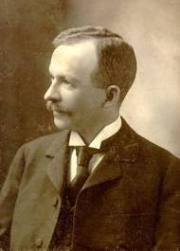W.H. (Willon Hatch) Brooks. Died 21 May 1925, Mitchell, Bertie County. Colored. Married. Farmer. Born 29 April 1860 in Wayne County to Wright Casey and Caline Brooks. Informant, Dave Brooks.
In the 1860 census of Indian Springs, Wayne County: Annis Brooks, 51, Caroline, 20, Bassel, 14, Elizabeth, 10, and Hatch, 2 months.
Louisa Davis. Died 23 August 1915, New Hope, Wayne County. Colored. Widow. Born 19 July 1840 in NC to Peter Ward and Milly Smith. Buried New Hope township. Informant, Clarisy Davis, Goldsboro.
Isham Smith. Died 12 February 1914, Fork, Wayne County, Colored. Married. Undertaker. Born North Carolina to unknown parents. Buried in Goldsboro. Informant, W.W. Faison.
In the 1860 census of Buck Swamp, Wayne County: Milly Smith, 45, and children Louisa, 25, Bitha, 15, Frances, 8, Clarissa, 4, Eliza, 5, Isam, 3, and Virginia, 1. [Sidenote: Isham Smith married Nancy Henderson, daughter of James and Louisa Armwood Henderson and sister or half-sister to Lewis and John Henderson and others. Isham and Nancy’s daughter Annie Smith married James Guess, who took over his father-in-law’s undertaking business and operated James Guess Funeral Home into the mid-20th century. — LYH]
Fannie S. Norwood. Died August 1930, Wilmington, New Hanover County. Resided 520 Walnut. Negro. Widowed. Teacher. Born in 1846 in Wilmington to James D. Sampson of Sampson County and Francinea Kellogg of Wilmington. Buried in Pine Forest. Informant, Mrs. S.E. Merrick, 520 Walnut.
In the 1850 census of Wilmington, New Hanover County: Jas. Sampson, 44, carpenter, wife Fanny, 39, children Jas., 20, Jos., 18, and Benj’a, all apprentices, John, 14, Mary, 12, M.A., 10, George, 8, Fanny, 4, and Nathan, 2.
William Petapher. Died 4 May 1910, New Bern, Craven County. Colored. Married. Shoemaker. Born 1843 to Wright Petapher and unknown mother. Buried Greenwood cemetery. Informant, Rosa Petapher.
Cesero Wiggins. Died [no day] April 1924, New Bern, Craven County. Negro. Carpenter. Resided 24 Crooked. Widower of Clarncie Wiggins. Born 1860 in New Bern to Wright Pettipher and Sarah Wiggins. Buried at Pettiphords cemetery. Informant Louisa Wiggins.
In the 1860 census of Neuse River, Craven County: Sarah Wiggins, 35, day laborer, Martha, 14, Julia, 12, Sabine, 10, Rebecca, 8, and Cicero, 6.
Theophilus George. Died 26 February 1918, #5, Craven County. Negro. Married to Hepsey George. Born 10 July 1850 to Theophilus George and Sarah Harkley. Informant, Oscar Frazier.
Mary F. Carter. Died 27 July 1915, North Harlour, Craven County. Negro. Married. Born 10 April 1863 in Craven County to Lige George and Sarah Fenner, both of Craven County. Buried Cohogue. Informant, A.V. George.
In the 1860 census of Goodings, Craven County: Elijah George, 50, farmer, wife Sarah, 30, Theophilus, 20, Timothy, 8, Nancy, 10, J.P., 4, and T.J., 2.
Bailey Godette. Died 22 June 1915, No. 5, Craven County. Negro. Married. Farmer. Born 15 May 1861 in North Harlowe to Andrew Godette and Debah George, both of North Harlowe. Buried North Harlowe cemetery. Informant, Debah Jackson, 99 Bern Street.
In the 1860 census of Goodings, Craven County: Andrew Godett, 24, day laborer, Mary F., 27, William B., 6, Nancy, 4, and Sarah A., 3 months.

